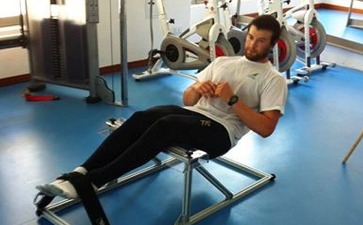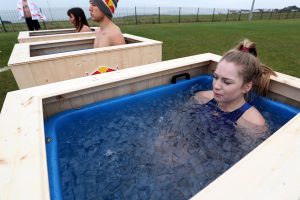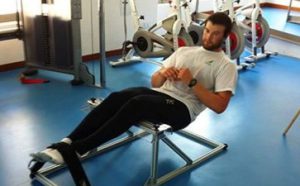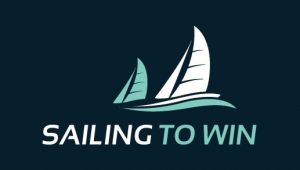

Sailing Specific Fitness – I have summarised below some of the nuggets that I read in Michael Blackburn’s excellent book “Sail Fitter” and I highly recommend that if you are serious about getting faster on the race track your fitness is one of the major factors that will influence your results.
Michael’s book is full of excellent advice and training tips from a qualified person, not only qualified academically but with proven on-the-race-track achievements.
Be Adaptable –
If you turn up to go sailing for a heavy air workout in your boat and the day turns out to be a drifter, cancel sailing and hit the gym.
When end up sailing, follow up with a hard gym session working on the muscle groups that would have copped a hammering if you had sailed in strong conditions.
If you have scheduled a gym session and you turn up in not-so-good condition such as lingering fatigue then you might reduce the volume and/or intensity of the session.
Recovery –
Use ice and cold water recovery practices and remember that you don’t get fitter from training until you get a chance to rest and let the body rebound.

You can recover faster for your next training session using recovery strategies like cold water immersion.
Develop Your Back –
The back is the part of the body that sees the most injuries for sailors.
An important part of your fitness training is to include exercises for the lower back and deep abdominal muscles and you should try to do something with each of these muscle groups every day.
Shoulders –
These are the sailor’s next most problematic and injured body part and it is the sudden movements of the arms over a large range of motion that will affect your shoulder joints.
If you have a weakness in this area or simply want to assist your body and to prevent injuries, sailors should include shoulder stabilisation exercises. Michaels’s book or YouTube are two great sources of these types of exercises.
Hip Flexors –
Because of the way we sit in our boats, the hip flexors are in a shortened state. At the end of the sailing session, you need to engage in stretches. This helps the muscles recover, helps in reducing lower back issues and helps improve your posture.
Equipment –
To assist with hiking, consider battened hiking pants, these will enhance your endurance. Grip on the boat with appropriate materials will enable you to move without slipping and sliding. The same goes for having good gloves, effective soles on your boots and a wetsuit with nonslip and kneepads.
A sometimes overlooked fact is that hot muscles are less efficient. Correct clothing for the prevailing conditions needs to ensure that muscles stay cool.
Be Scientific –
Keep records of your fitness the aim being to find out by trial and error what works and what doesn’t. Body weight is something you should keep an eye on. Many classes have an optimum weight or weight range.
Keep a spreadsheet or notebook with exercises and food programs. It is sometimes helpful to look back over the years gone by to see what you have done by way of food and exercise to achieve different results.
Many elite sailors have records stretching back over 10 or more years.
Hiking Exercises –
A Swiss Ball makes an excellent hiking bench to train your legs and work on your abdominals. This is a particularly useful exercise if you have had a number of light days. It keeps your muscles in peak condition for the next blow.

Better Technique –
Michael says that you are better off hiking at 90% rather than if hiking at 100% you end up fatigued. This affects your ability to steer, trim and decide tactics.
What you lose in the righting moment you gain in these other areas.

